- News
- Reviews
- Bikes
- Components
- Bar tape & grips
- Bottom brackets
- Brake & gear cables
- Brake & STI levers
- Brake pads & spares
- Brakes
- Cassettes & freewheels
- Chains
- Chainsets & chainrings
- Derailleurs - front
- Derailleurs - rear
- Forks
- Gear levers & shifters
- Groupsets
- Handlebars & extensions
- Headsets
- Hubs
- Inner tubes
- Pedals
- Quick releases & skewers
- Saddles
- Seatposts
- Stems
- Wheels
- Tyres
- Tubeless valves
- Accessories
- Accessories - misc
- Computer mounts
- Bags
- Bar ends
- Bike bags & cases
- Bottle cages
- Bottles
- Cameras
- Car racks
- Child seats
- Computers
- Glasses
- GPS units
- Helmets
- Lights - front
- Lights - rear
- Lights - sets
- Locks
- Mirrors
- Mudguards
- Racks
- Pumps & CO2 inflators
- Puncture kits
- Reflectives
- Smart watches
- Stands and racks
- Trailers
- Clothing
- Health, fitness and nutrition
- Tools and workshop
- Miscellaneous
- Buyers Guides
- Features
- Forum
- Recommends
- Podcast
review
£6,600.00
VERDICT:
Fast, light gravel ripper with top-notch equipment and useful suspension tech
Suspension a genuine benefit off road
Fast and fun ride
Dropper and mudguard compatible
Fiddly front wheel removal
Tyres not up to technical stuff
Costs large amounts of money
Weight:
9,920g
Contact:

This product has been selected to feature in road.cc recommends. That means it's not just scored well, but we think it stands out as special. Go to road.cc recommends
At road.cc every product is thoroughly tested for as long as it takes to get a proper insight into how well it works. Our reviewers are experienced cyclists that we trust to be objective. While we strive to ensure that opinions expressed are backed up by facts, reviews are by their nature an informed opinion, not a definitive verdict. We don't intentionally try to break anything (except locks) but we do try to look for weak points in any design. The overall score is not just an average of the other scores: it reflects both a product's function and value – with value determined by how a product compares with items of similar spec, quality, and price.
What the road.cc scores meanGood scores are more common than bad, because fortunately good products are more common than bad.
- Exceptional
- Excellent
- Very Good
- Good
- Quite good
- Average
- Not so good
- Poor
- Bad
- Appalling
Cannondale's Topstone Carbon Lefty 1 is a technological tour-de-force: a sub-10kg, full suspension gravel bike with a monoblade Lefty fork. It's also a hoot to ride, and well-suited to fast riding on a wide range of surfaces. Yes, it's expensive, but nice things often are.
First things first: do you need a full suspension gravel bike? Given that the Rough Stuff Fellowship have been hoiking Dawes Super Galaxy tourers and suchlike across inappropriate terrain since the 1950s, it's easy to argue you don't need a gravel bike of any sort to have fun off-road.
> Find your nearest dealer here
And if you're going anywhere you properly need suspension, there's a whole world of mountain bikes out there waiting for you. So is the Topstone a niche within a niche, with limited appeal? I'd argue not.
Off road surfaces are bumpy – stop me if i'm getting too technical – and that's why the trend in gravel biking has been towards larger-chamber tyres. Ten years ago you'd have been hard pressed to find anything bigger than a 700x40c; nowadays 650b wheels and 50mm tyres to fit to them are fairly commonplace.
Go any bigger than that, though, and the tyres don't work nearly as well on the tarmac. Adding a small amount of suspension gives a comfort gain on the rough without really sacrificing speed on the smooth. Provided you do it right.
And Cannondale has done it right with the Topstone Carbon. At the back the suspension is a combination of the frame and the seatpost; there's just a single pivot, between the seatstays and the seat tube.
The rear wheel movement is achieved through flex in the stays, and the damping is just what the carbon layup can provide; it's tuned to the bike's frame size to give a similar response for different sizes of rider. Cannondale claims the system offers up to 30mm of rear wheel travel.
The LockR pivot locks the movement of the two seatstays together so that hits at the back don't twist the wheel out of line.
In terms of a suspension setup it's very simple. There are no shocks or linkages, and because of that it's a very lightweight solution. You don't get the same level of tuning or damping control you'd have with a rear shock, but we're not talking huge amounts of travel here: in use the bike doesn't feel like it has rear suspension, it just feels comfortable, like it's wearing even bigger tyres than the 47mm WTB semi-slicks it comes with.
There's no unusual feedback under pedalling and the bike behaves just like a rigid frame under power, with no noticeable flex from the rear triangle.
If the suspension at the back is as simple as it comes, the opposite is true at the front. The Lefty Oliver fork on this bike is specifically designed for gravel riding, and again gets just 30mm of travel.
The process of adjusting to a monoblade fork like the Lefty Oliver is similar to the process of adjusting to carrying bikes on a rear-mounted carrier on your car: you spend the first few miles fretting it's all going to go horribly wrong, and then you forget about it for the rest of the journey.
There are no issues with the Lefty not being stiff enough to track effectively: none at all. If you didn't look at it, you wouldn't know it was a single-sided fork.
Where the back of the bike doesn't necessarily feel like 'real' suspension, the front does: this is a proper air-sprung unit and you can tune the spring pressure and rebound damping to get the feel you want. On the road you get a bit of wallow when you're standing on the climbs, but with only 30mm of travel it's not really much of an issue.
If you prefer you can lock the fork out on the road. It's not a full lockout: the fork will still respond to bigger hits, but the compression damping is ramped right up so the fork is a lot firmer.
Taking the wheel off means also taking the front brake caliper off, and there's a quick release for that. It's okay in a workshop situation but a bit of a faff on the trail, although of course the single-sided design means there's less need to actually remove the wheel as you can get the tyre off with the wheel still in situ.
The upshot of all the tech Cannondale has crammed into the Topstone is that it's a great bike to pilot over less technical stuff, and it's not compromised on the road either. Even though the approaches to suspension at the front and the rear are very different, the bike feels well balanced.
Geometry
With a stack-to-reach ratio of 1.54 (size L), the Topstone is similar in aggressiveness to the Kinesis Tripster ATR V3 – and for me that's just about the sweet spot for covering distance at speed, yet maintaining good control on unmade surfaces.
Cannondale has opted for a slightly longer rake here, so the front wheel sits a bit further forward; something they call Outfront steering geometry. The idea is it's more stable on rougher terrain, and certainly the Cannondale feels more at home on the bumpier stuff than the Kinesis.
I'd say that's probably more to do with the bigger chamber tyres and suspension than the geometry though; it's always hard to pinpoint exactly what's making the difference when everything's a variable.
If you plan to do much seat-of-the-pants stuff on the Topstone, it's designed to work with an internally-routed dropper post, although this build doesn't include one. If you're running a mechanical 1x drivetrain it's possible to use the redundant shifter to activate the dropper (with the wireless setup on this bike that's not an option, so you'd need a separate bar-mounted lever).
The tyres – a WTB Byway on the rear and a WTB Venture on the front, both 650bx47mm – are probably the perfect combination for sunny, dry bikepacking adventures. It wasn't sunny or dry when I tested this bike, and so they felt a bit compromised: the slick-centred Byway has basically no grip on the slippery chalk of Salisbury Plain in the winter.
The Venture, with its more aggressive tread, is a bit better, though you'd still class it as a semi-slick. Both roll very well on the road, but for mixed surface rides it's definitely a height-of-summer combination for the UK, and I'd sacrifice a bit of speed on tarmac for a less slithery ride on the off-road descents.
On this top-dollar build the WTB tyres roll on Cannondale's HollowGram 23 carbon wheels, which were faultless throughout: stiff, light and true. They're tubeless-ready, and with a 23mm internal rim width they're perfect for the sort of tyre sizes you're likely to fit to a bike like this.
Obviously with a lefty fork it's not straightforward to swap wheelsets if you're not happy with the performance, but there's no reason to suspect that'll be the case here. They're excellent wheels.
Cargo
If you want to load up your bike and head off into the great unknown – or just over the hill for a bivvy – then the Topstone is reasonably well-served with luggage points. You can't really fit much to the fork, with it being one-sided and suspended, but there's plenty of room in the main triangle for a decent frame bag, and the down tube has three mounting points so you can set your bottle cage low for room.
There's a set of top tube mounts for a racing bag, too, and a third set of bottle bosses under the down tube by the bottom bracket. You're not likely to want to fit a pannier rack to a bike like this, and it isn't designed for one, but there's plenty of room for a big bikepacking seatpack.
If you decide you want mudguards there's a removable seatstay bridge to accommodate the rear 'guard. At the front there's a range of aftermarket single-sided mudguards you can fit to the Lefty fork.
This high-end build of the Topstone Lefty Carbon gets a wireless SRAM groupset, a mix of the 12-speed X01 Eagle eTap AXS mountain bike groupset and Force AXS road shifters, and a 40t single ring chainset. With a whopping 10-52t cassette, this bike has a huge gear range across its 12 sprockets.
The 40/10 top gear isn't huge, but it's been enough to keep up with road bikes on the fast bits around here, and at the other end the 40/52 bottom gear is tiny – small enough for winching up steep and technical stuff off-road. The trade off for the range is the gaps between ratios, which are pretty big across the cassette and especially so at either end.
If you're used to the close ratios of a road double transmission that might feel a bit jarring at times, especially in a group on the tarmac bits. I didn't find it a particular issue, and although I did note it from time to time on the road, as soon as the tyres hit gravel it was never a thing I was thinking about. With more of your brain occupied with finding your line and keeping momentum, optimal cadence drops down the list.
The groupset worked flawlessly throughout. You get a button on the left lever to make things easier, and one on the right to make things harder, and that's it. If you're used to mechanical systems it takes a bit of reprogramming to get your head around the fact both levers control the same mech, but it makes sense once you're there.
I find electronic gears work much better across a wide-range cassette than mechanical ones, which tend to need very precise setup to work well with cogs over 40 teeth; that was never an issue with this bike. Nothing about the transmission was, really.
With no wires the groupset doesn't make use of the frame's internal routing, which is a shame because Cannondale has spent a lot of time making it very user-friendly: there's a full-length internal tube inside the frame from entry to exit, so you just poke the cable outer/hose right through.
> 11 of the best cycling multi tools — get the right bits to fix your bike's bits
On the cheaper mechanical builds of this bike, or for fiddling with the brake hoses on this one, that's a definite time-saver. Not that I needed to fiddle with the brakes on the Topstone: they worked pretty much faultlessly throughout.
I find that stock SRAM brakes are bit more prone to squeaking when wet than their Shimano counterparts, but stopping is never an issue.
There are a couple of other techy bits to note. This bike uses Cannondale's HollowGram SAVE SystemBar, which is semi-integrated: the bar and stem are separate, but designed to look like a single unit. There's 8° of pitch adjustment available, and you can swap the bars or stem for a different length without replacing the whole thing.
The carbon bar has a big flat top section which is very comfortable, and the flat, internally routed and low-frontal-area stem means it's probably more aero too, if you care about such things.
The drop position is fairly shallow, and easily accessible, and there's a bit of give in the bars too, which would probably be noticeable on a rigid-forked version of this bike, but isn't really in this case. There's not a lot of real estate for computers and lights and stuff, but the integrated out-front mount can be used to house them.
On the back wheel the Topstone Carbon has an integrated sensor designed for Cannondale's own app. It automatically records, and will store up to 30 rides between syncs with your smartphone using its on-board memory. The app also tells you when the bike is due a service, based on the miles you've logged.
> 25 of the best 2020 & 2021 gravel bikes & adventure road bikes
If you've spent over six grand on a bike you've probably got a GPS computer knocking about to do the ride recording, but the fuss-free tracking of a single bike's mileage might be useful to you, and it's not like you have to remember anything beyond syncing the bike once a month or so.
Value
So, who's this bike for? Obviously in this build the likely market is restricted a bit, although it's worth noting you can have the mechanically-geared Lefty 3 build of the Topstone Carbon, with the same frame and fork, for not much more than half what you're paying for this bike.
As ever, the law of diminishing returns applies: this bike isn't going to be twice as good, but it's lighter, with a wider gear range thanks to the 12-speed AXS groupset, and both those things are welcome upgrades.
The fact it's a very light rig is going to be of most interest if you're wanting to move fast. For any kind of competitive gravel event, the Topstone Carbon would be an obvious choice. Having ridden the 200km Dirty Reiver in the past, I think a bike like this would be a perfect choice: swap the tyres for something a bit narrower and more aggressive, and let the frame and fork add a bit of cush back.
You'll be thanking the nice folks at Cannondale for the suspension by the end.
If you're just heading out with your mates for overnighters or slamming round the local lanes and trails then it's probably overkill, but it's a lovely bike, and it's your money. I'm not going to tell you you can't have nice things.
> 26 of the best gravel bike tyres — get the right go-anywhere rubber
The more you're likely to load it up, the less you're likely to notice the extra weight of the cheaper build though – it keeps the suspension tech but uses cheaper components.
Overall
It's often easy to think of state-of-the-art bikes like this, with their top-spec components and technological innovations, more as look-at-me statements than actual bikes you'd buy. But it's good the boundaries between riding types are blurring, and that companies are trying interesting things.
For all its cleverness, my abiding impression of the Topstone Carbon is of a bike that's a lot of fun. It's light and fast – you can keep up on the road, and shoot off on the gravel. The suspension is a tangible benefit for riding on mixed surfaces at speed, and everything on it works brilliantly. There's lots to like here.
Verdict
Fast, light gravel ripper with top-notch equipment and useful suspension tech
road.cc test report
Make and model: Cannondale Topstone Carbon Lefty 1
Size tested: XL
About the bike
List the components used to build up the bike.
CONNECTIVITY
Wheel Sensor: Cannondale Wheel Sensor
DRIVETRAIN
Bottom Bracket:SRAM DUB BB30 ROAD83-A
Chain:SRAM X01 Eagle, 12-speed
Crank:SRAM Force AXS 1x Crankset, DUB Spindle, 40T
Rear Cogs:SRAM PG-1295, X01 Eagle, 10-52, 12-speed
Rear Derailleur:SRAM X01 Eagle eTap AXS
Shifters:SRAM Force eTap AXS HRD, 12-speed
FRAMESET
Fork:All-New Lefty Oliver Carbon, 30mm travel, Chamber Damper w/ All-Over tune, ISO High-Ride air spring, tapered steerer, 650b, 55mm offset
Frame:BallisTec Carbon Frame, Kingpin suspension system, 12x142 Speed Release thru-axle, dropper post compatible, direct line cable routing
Headset:Integrated, 1-1/8" - 1-1/2"
WHEELS
Front Hub:Lefty 50
Front Tire:WTB Venture TCS Light, 650 x 47c, tubeless ready
Rear Hub:HollowGram 12x142mm w/ DT Swiss 370 Internals
Rear Tire:WTB Venture TCS Light, 650 x 47c, tubeless ready
Rims:HollowGram 23, Superlight Hi-Impact Carbon, 28h, 23mm IW, tubeless ready
Spokes:HollowGram, 2.0/1.8/2.0, straight-pull
Tire Size:47
Tires:WTB ByWay TCS Light, 650 x 47c, tubeless ready
Wheel Size:650b
BRAKES
Brake Levers:SRAM Force AXS
Brakes:SRAM Force eTap AXS, 160/160mm 6-bolt rotors
COMPONENTS
Grips:Cannondale Bar Tape, 3.5mm
Handlebar:HollowGram SAVE SystemBar, Carbon, 8 deg. pitch adjust
Saddle:Fabric Scoop Shallow Race, titanium rails
Seatpost:HollowGram SAVE Carbon, 27.2 x 350mm
Stem:HollowGram SAVE, Alloy, -6°
Tell us what the bike is for and who it's aimed at. What do the manufacturers say about it? How does that compare to your own feelings about the bike?
Cannondale says: "More Give. More Go. More Lefty. A gravel bike to beat all gravel bikes. Dual suspension makes this the most off-road capable and on-road comfortable road bike ever made."
Where does this model sit in the range? Tell us briefly about the cheaper options and the more expensive options
There are two bikes with the Lefty fork. The other (Lefty 3) has a mechanical groupset and alloy wheels, for £3,400.
Frame and fork
Overall rating for frame and fork
9/10
Tell us about the build quality and finish of the frame and fork?
Very nicely built, well finished, easy-to-use internal routing.
Tell us about the materials used in the frame and fork?
Fork:All-New Lefty Oliver Carbon, 30mm travel, Chamber Damper w/ All-Over tune, ISO High-Ride air spring, tapered steerer, 650b, 55mm offset
Frame:BallisTec Carbon Frame, Kingpin suspension system, 12x142 Speed Release thru-axle, dropper post compatible, direct line cable routing
Tell us about the geometry of the frame and fork?
Our large frame has a 1.54 stack-to-reach ratio, 71.2° head tube, 55mm fork rake, and 1049mm wheelbase.
How was the bike in terms of height and reach? How did it compare to other bikes of the same stated size?
It fitted me well for mixed-surface riding.
Riding the bike
Was the bike comfortable to ride? Tell us how you felt about the ride quality.
It's a very comfortable bike, with the suspension adding extra cushioning.
Did the bike feel stiff in the right places? Did any part of the bike feel too stiff or too flexible?
The Topstone still feels stiff thorough the core.
How did the bike transfer power? Did it feel efficient?
It feels efficient with no discernible flex.
Was there any toe-clip overlap with the front wheel? If so was it a problem?
I didn't have any issues.
How would you describe the steering? Was it lively neutral or unresponsive? Steering is neutral.
Tell us some more about the handling. How did the bike feel overall? Did it do particular things well or badly?
The slackish head angle and higher fork rake make it slower steering than more road-oriented gravel bikes, but on technical stuff it feels well planted.
Which components had the most effect (good or bad) on the bike's comfort? would you recommend any changes?
The suspension definitely adds to the comfort.
Which components had the most effect (good or bad) on the bike's stiffness? would you recommend any changes?
Everything works well, there's nothing I would particularly change.
Rate the bike for efficiency of power transfer:
8/10
Rate the bike for acceleration:
8/10
Rate the bike for sprinting:
6/10
Rate the bike for high speed stability:
9/10
Rate the bike for cruising speed stability:
9/10
Rate the bike for low speed stability:
10/10
Rate the bike for flat cornering:
8/10
Rate the bike for cornering on descents:
9/10
Rate the bike for climbing:
9/10
The drivetrain
Rate the drivetrain for performance:
10/10
Rate the drivetrain for durability:
8/10
Rate the drivetrain for weight:
10/10
Rate the drivetrain for value:
6/10
Wheels and tyres
Rate the wheels for performance:
9/10
Rate the wheels for durability:
9/10
Rate the wheels for weight:
9/10
Rate the wheels for comfort:
8/10
Rate the wheels for value:
6/10
Rate the tyres for performance:
6/10
Rate the tyres for durability:
9/10
Rate the tyres for weight:
7/10
Rate the tyres for comfort:
8/10
Rate the tyres for value:
7/10
Tell us some more about the tyres. Did they work well in the conditions you encountered? Would you change the tyres? If so what for?
They're not the tyres for winter riding round here, but they'll be fun and fast in summer.
Controls
Rate the controls for performance:
9/10
Rate the controls for durability:
8/10
Rate the controls for weight:
8/10
Rate the controls for comfort:
9/10
Rate the controls for value:
7/10
Your summary
Did you enjoy riding the bike? Yes
Would you consider buying the bike? I'd be tempted by the cheaper build
Would you recommend the bike to a friend? Yes
How does the price compare to that of similar bikes in the market, including ones recently tested on road.cc?
There aren't many full suspension gravel bikes out there in the wild. Clearly £6,600 is a lot of money for any bike, but you can pay more: The Pinarello Grevil+ is £7,000, and the S-Works Diverge Carbon even more at £7,499. As ever the law of diminishing returns applies when you're sticking top-end kit on a top-end frame.
Rate the bike overall for performance:
9/10
Rate the bike overall for value:
6/10
Use this box to explain your overall score
The performance is more important than the value here: you can get this chassis with cheaper kit for about half the price of this top-dollar build, so the extra spend is for the incremental gains. It's up to you to decide whether that's worth it or not.
About the tester
Age: 47
I usually ride: whatever I'm testing... My best bike is: Kinesis Tripster ATR, Merida Scultura, Dward Design fixed
I've been riding for: Over 20 years I ride: Every day I would class myself as: Experienced
I regularly do the following types of riding: road racing, time trialling, cyclo cross, commuting, touring, club rides, sportives, general fitness riding, fixed/singlespeed, mtb, Mountain Bike Bog Snorkelling, track
Dave is a founding father of road.cc, having previously worked on Cycling Plus and What Mountain Bike magazines back in the day. He also writes about e-bikes for our sister publication ebiketips. He's won three mountain bike bog snorkelling World Championships, and races at the back of the third cats.
Latest Comments
- Mr Blackbird 22 min 1 sec ago
A lot of large SUV drivers seem to be fat. Maybe owning a large, wide car makes them feel slimmer. A bit like buying their clothes from Jackamo (...
- Dnnnnnn 24 min 8 sec ago
It is sad for the individuals concerned but (and this is a general point, rather than specific to this story), we're much better off overall for...
- No Reply 41 min 4 sec ago
I agree with Pogacar regarding social media. The likes of Facebook, Instagram have done untold damage, especially to the minds of young people....
- David9694 45 min 54 sec ago
Lorry carrying 25 tonnes of beer catches fire on the M11...
- No Reply 50 min 26 sec ago
If you're a cyclist on a road you are public enemy number 1.
- Rendel Harris 1 hour 19 min ago
He advocates only riding mountainbikes solely offroad for ultimate safety, which is great if you're a millionaire of leisure living in Colorado...
- ktache 1 hour 50 min ago
That looks like a fun bike. Frame only, 2 and an 1/2 grand.
- wtjs 2 hours 47 min ago
Fair enough, personal experience may trump (not that one) theory. However, the bonking I have experienced has been due to lack of carbs. Your point...
- Rendel Harris 4 hours 14 min ago
mdavidfrodo?
- wtjs 7 hours 53 min ago
in the UK we have policing which to a greater or lesser extent relies on assistance from members of the public......




































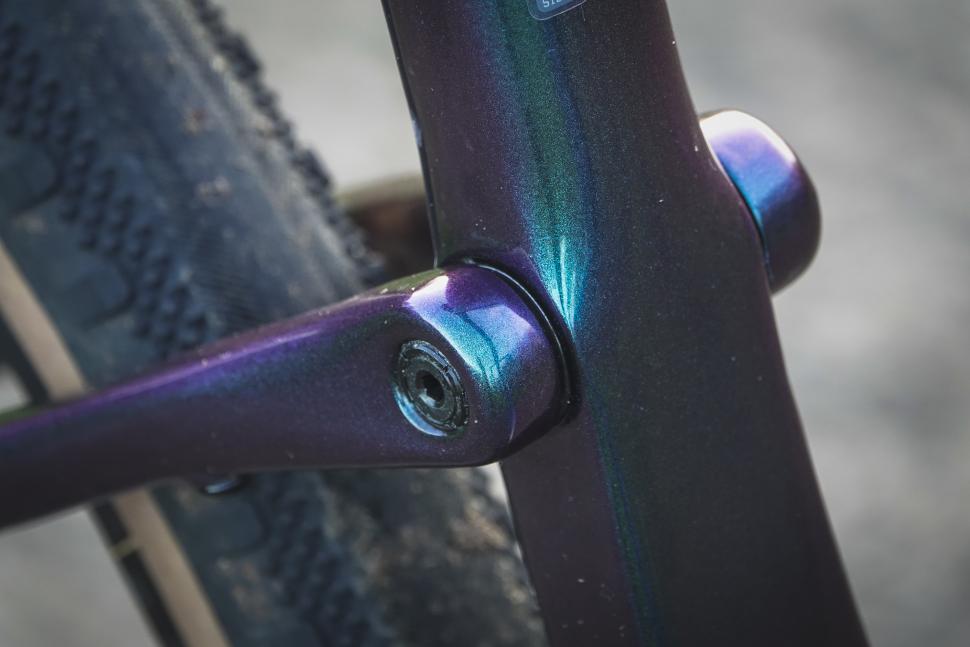


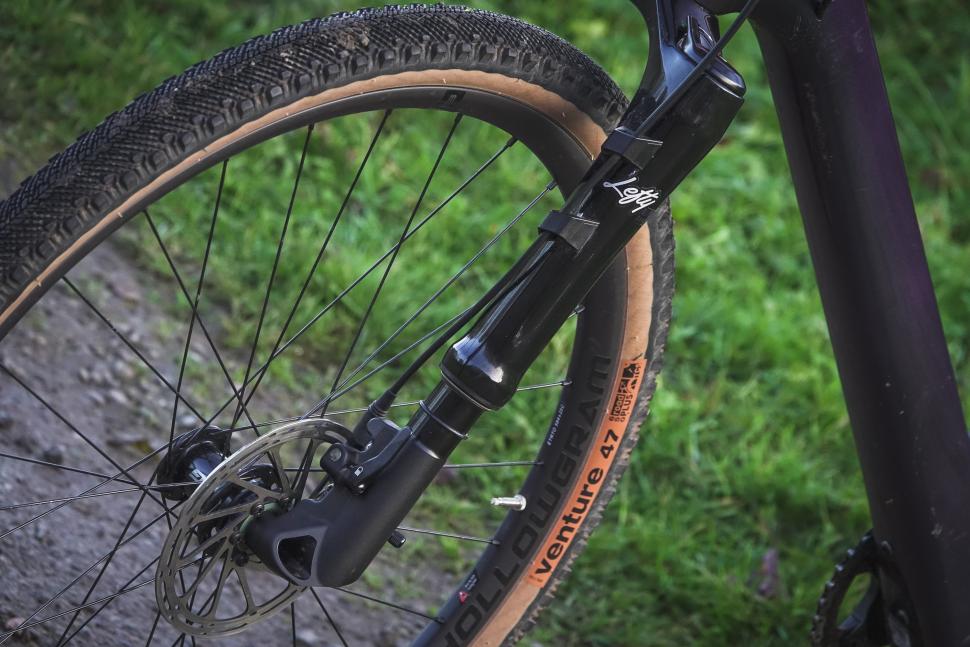




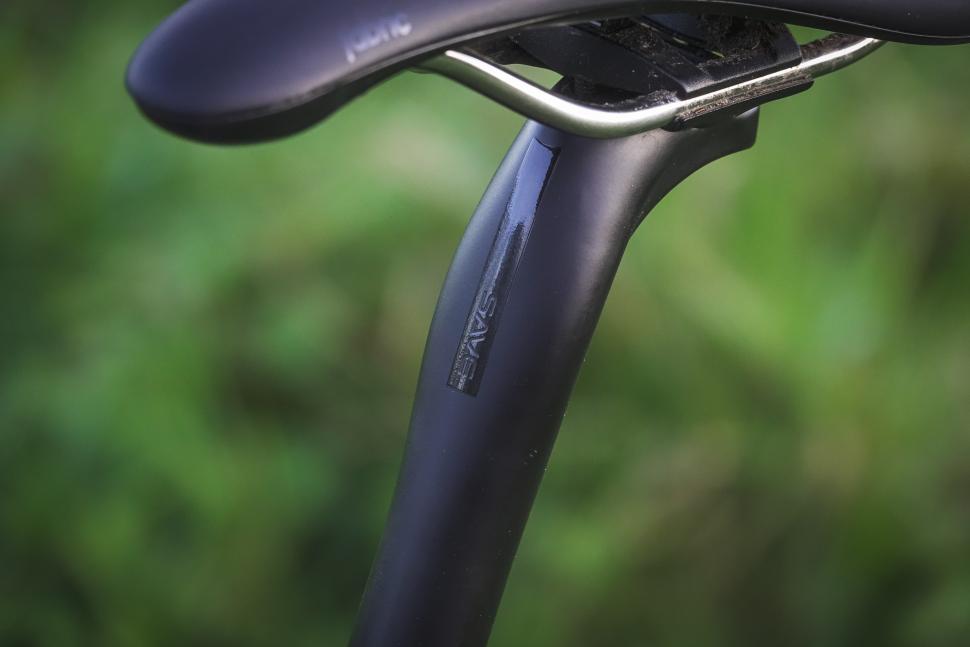


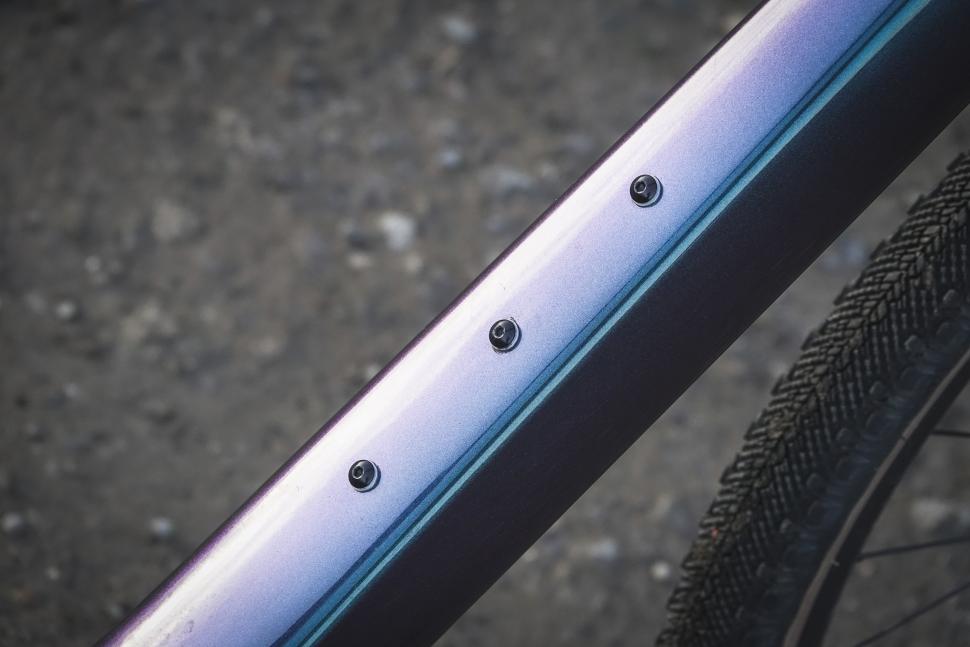



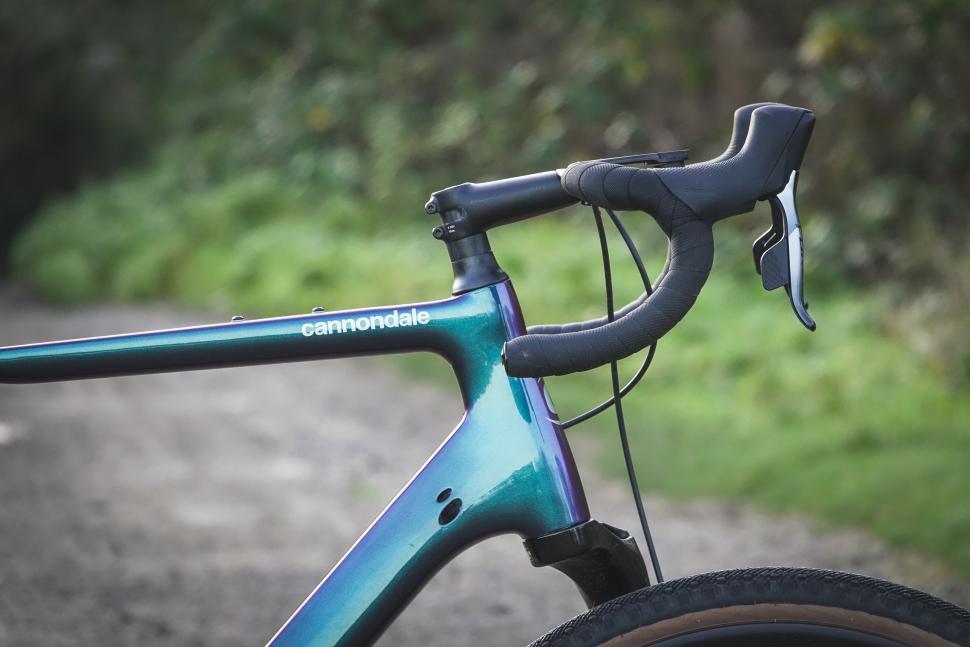


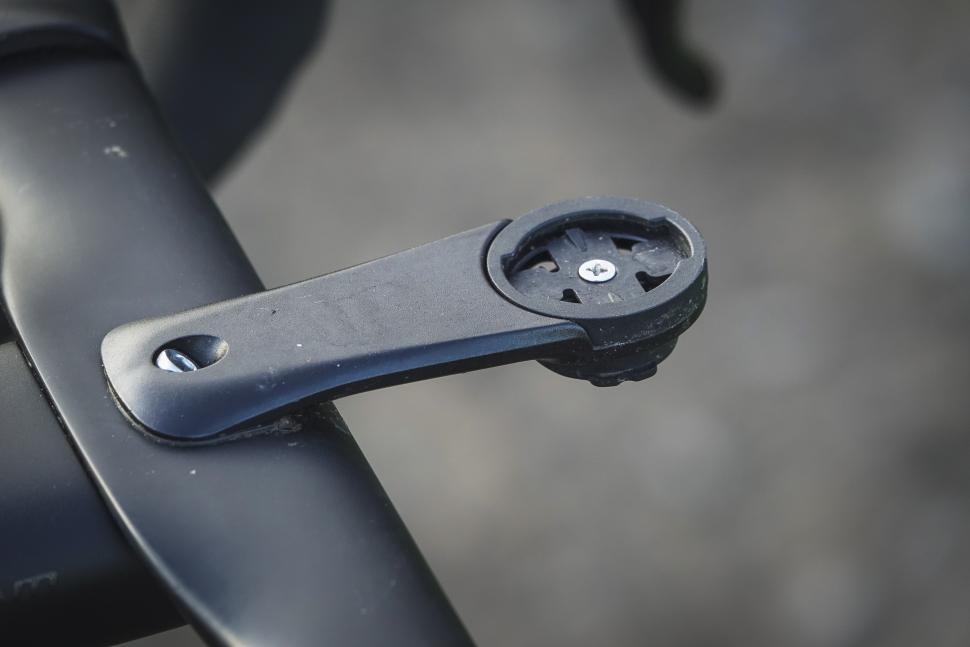



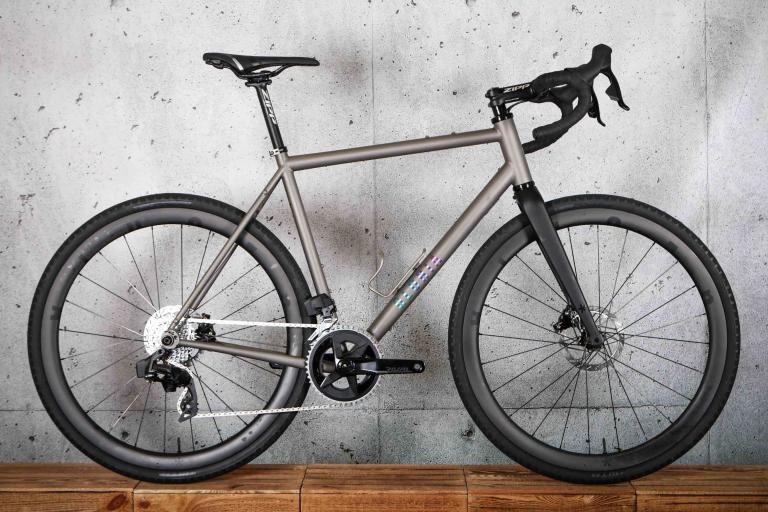
Add new comment
17 comments
I would have bought one if they had any to sell, but they don't......
Sod that for a game of soldiers, get hold of a Cannondale Hooligan and really enjoy your ride.
> The process of adjusting to a monoblade fork like the Lefty Oliver is similar to the process of adjusting to carrying bikes on a rear-mounted carrier on your car: you spend the first few miles fretting it's all going to go horribly wrong, and then you forget about it for the rest of the journey.
So long as it's not like a roof carrier - that you forget about after driving under/into a height restriction barrier (the bike was fine (and it wasn't expensive), but the roof bars and fixing points were never usable again).
Aside from the double-take looks, is there any advantage to a single-sided fork? A passing reference to simpler tyre removal is the only one mentioned, counter-balanced by more awkward wheel removal. Add the restricted choice of front mudguards, the loss of front panniers and the limitations on wheel swapping and I fail to see what this costly feat of engineering achieves.
Aside from the double-take looks, is there any advantage to a single-sided fork?
No. The Looks Are the Point, for people like that.
Is there a weight advantage? 1/2 a kg perhaps?
Any weight advantage of 1 stanchion against 2 is offset by the requirement to beef the crown, stanchion, dropout/axle mount, and axle itself against flexing due to the inevitable turning moment that would usually be cancelled entirely with a conventional fork. On a lefty the best you can hope is to reduce that turning moment to be small enough so as not to notice, or at least so that it's tolerable considering the weight advantage. But it can't be cancelled.
Are there any left users reading that can give an opinion? are there other advantages? Is longevity a factor? Is uneven wear in the cylinder an issue?
Needle bearings in the triangular pattern (or square on older ones) on a Lefy will still work with side, ie uneven, loads, where standard suspension forks will have friction losses in this situation. I think this is the main advantage, coupled with the reduced weight, I guess the tradeoff in servicability and expense is a personal choice.
Aaah, I see yes, I can see how that will help to prevent uneven wear. Thanks
Still it seems like a solution for an issue inherent, rather than something that is advantageous in itself?
Another advantage I've heard is that loading the suspension through a single stanchion means it's inherently easier to overcome stiction, so the small bumps that otherwise might not even cause a regular full sus setup to even move get absorbed. That said, given Cannondale are basically the only folk out there making them, I can't help but think that the biggest reason Lefty forks exist is marketing.
Your point about the fact that lefties hadn't proliferated to other manufacturers occurred to me too. There's only so much IP that patents actually protect - there's always a work-around, so the fact that no other manufacturers bother suggests the demand for this format is not sizable. I suppose there are only so many Guardian readers....😉
The fact that there have been a number of motorbikes with single-sided forks more than decades ago is probably 1 huge work-around. The idea itself can no longer subject to patents.
They havn't caught on in motorcycles either.
The wheel spacing is offset by 6mm on these, so you can't just swap in regular wheels, rather annoying.
Laterally stiff and very vertically compliant!
And a lovely paintjob too...
It's mad. It's expensive. And I love it.
I love lefty's and a lefty "road" bike floats my boat. I like to pop into Cannondale dealers every so often and find the most "roadie looking" sales assistant and torment them by asking about them.
Never heard of them until five minutes ago, now want one so much it hurts. Anyone in the market for a kidney?
Left is old hat. You want Rob English's Project Right and go all out on single sidedness.
https://www.englishcycles.com/custombikes/project-right/